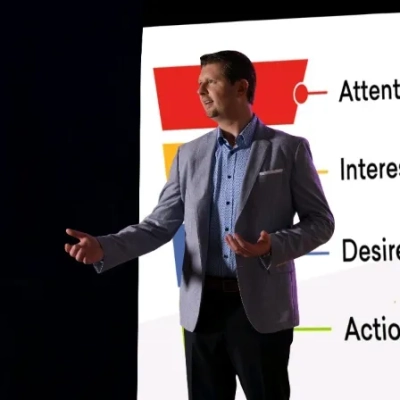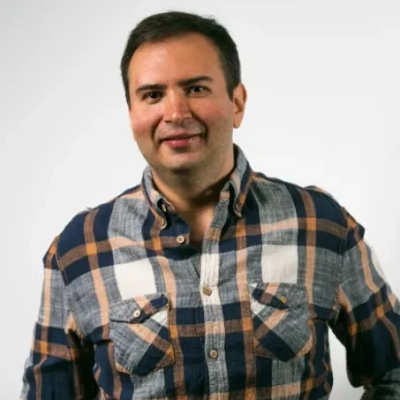Unconventional Risk Management Strategies for Bootstrapped Startups
Bootstrapped startups face unique challenges in managing risks, but there are unconventional strategies that can help. This article presents expert-backed approaches to risk management that go beyond traditional methods. From targeting harsh critics for validation to creating failure funds, these strategies offer practical ways for startups to navigate uncertainty.
- Target Harsh Critics for Micro-Validation Sprints
- Diversify Suppliers to Mitigate Supply Chain Risks
- Pre-Sell Products to Validate Market Demand
- Implement 90-Day Reversible Bet Rule
- Use Client Prepayments as Rainy Day Fund
- Create Failure Fund for Trial-and-Error Projects
- Turn Inventory into Cash-Flow Buffer
- Build Social Capital as Hidden Safety Net
- Conduct Pre-Mortems to Anticipate Potential Failures
- Leverage Skills-for-Products Exchange Network
- Focus on Reversible Experiments to Contain Risk
- Prioritize Repeat Business for Stable Growth
- Utilize Free Resources Until Product-Market Fit
- Test Minimum Viable Product Within 48 Hours
- Treat Customer Onboarding as Mini Product Launch
- Use Own Product as Financial Risk Buffer
- Partner with Organizations for Targeted Distribution
- Create Frankenstein Model for Quick Testing
- Become Guinea Pig for Own Security Solutions
- Negotiate Deferred Payment Terms in Advance
- Build Redundancy Through Talent Overlap
- Seek Smallest Clients as Testing Grounds
- Use Proxy Positioning to Market Through Constraints
- Diversify Emotional Triggers Driving Client Decisions
- Build Paid Side Projects as Test Beds
- Implement Regulatory Insurance From Day One
Target Harsh Critics for Micro-Validation Sprints
Great question! I founded Titan Technologies in 2008 and learned risk management the hard way while building our cybersecurity practice from scratch.
My most unconventional strategy was deliberately seeking out the smallest, most ignored businesses as our first clients. Everyone told me to chase big corporate contracts, but I targeted mom-and-pop shops that larger MSPs wouldn’t touch. These businesses had zero IT budgets and were getting hacked constantly – perfect testing grounds for our security protocols without the pressure of million-dollar contracts.
Here’s why this worked brilliantly: small businesses fail fast and cheaply when your solutions don’t work, giving you rapid feedback loops to refine your approach. I learned more about real-world cybersecurity in six months working with 20 small clients than I would have in years chasing enterprise deals. When one client was hit by ransomware despite our early protection attempts, we used that failure to build bulletproof systems for everyone else.
The genius move was turning these “practice clients” into case studies and referral engines. By the time we were ready for bigger clients, we had dozens of success stories and rock-solid processes. Those same small businesses that initially cost us money upfront became our best marketing assets – they’d tell anyone who’d listen how we saved their bacon from hackers.
 Paul Nebb
Paul Nebb
CEO, Titan Technologies
Diversify Suppliers to Mitigate Supply Chain Risks
Great question – I’ve literally been through this twice, once building my own agency and again helping my husband launch his medical practice in July 2024 with an aggressive non-compete clause breathing down our necks.
My unconventional strategy was what I call “proxy positioning” – instead of avoiding our biggest risk (the non-compete), we used it as our marketing advantage. We created a comprehensive marketing plan that highlighted how we were successfully navigating restrictions that other doctors were afraid to face. This actually became our funding pitch and helped secure the practice launch capital.
The results speak volumes: $239K billed in 90 days, 263 referring physicians by year one. The non-compete that seemed like our death sentence became our differentiator – other physicians started reaching out, asking how we did it while staying compliant.
For other entrepreneurs facing legal or regulatory restrictions: don’t hide from your constraints, market through them. Turn your biggest obstacle into proof that you can solve problems others can’t. We’re now booking clients specifically because we’ve proven we can build practices even with enforceable non-competes.
 Ashley Gay
Ashley Gay
Owner, Digital Ash Agency
Pre-Sell Products to Validate Market Demand
Starting CC&A in 1999 as a website design firm, I learned risk management the hard way when the dot-com bubble burst. My unconventional strategy was what I call “psychological diversification” – instead of just diversifying revenue streams, I diversified the emotional triggers that drove client decisions.
Here’s a specific example: When HTML and Flash animation work started drying up, instead of pivoting to a completely different service, I studied why clients were really buying from us. They weren’t just buying websites – they were buying credibility, competitive advantage, and peace of mind. So I repositioned the same core team to offer “digital psychology” services, helping clients understand the behavioral science behind their customers’ buying decisions.
The breakthrough came when I realized that economic downturns don’t eliminate spending – they just change the psychology behind it. During tough times, businesses become more focused on ROI and measurable outcomes. By understanding this shift in buyer psychology, we actually grew during the 2001 recession while our traditional web design competitors folded.
This approach worked because it addressed the root cause of business risk – misunderstanding your market’s emotional drivers. When you know the psychological “why” behind your customers’ decisions, you can adapt your offering without starting from scratch. We went from a $50K website design firm to a strategic media company working with organizations worldwide, all by reading the room psychologically instead of just financially.
 Steve Taormino
Steve Taormino
CEO, Stephen Taormino
Implement 90-Day Reversible Bet Rule
When you’re bootstrapping, risk isn’t just part of the job — it is the job. Every decision feels existential because there’s no cushion, no VC buffer to absorb a misstep. For me, one unconventional but highly effective strategy was building paid side projects that doubled as both revenue streams and test beds for our core product ideas.
Instead of pouring everything into one big launch, we created micro-tools — often just landing pages or stripped-down versions of larger features — and monetized them directly. One tool we built was so niche it never scaled, but it brought in enough monthly recurring revenue to cover a contractor and gave us real-world user feedback that shaped our roadmap.
This approach allowed us to de-risk product development while validating demand, all without burning cash. It also gave us proof points — actual revenue, real users — that we could later use to attract partnerships and early hires.
I’d recommend this approach to other founders because it flips the usual MVP playbook on its head: instead of launching and hoping to scale, you’re iterating with a purpose and a paycheck. It teaches you to stay lean, move fast, and most importantly, to build things people are actually willing to pay for.
 Patric Edwards
Patric Edwards
Founder & Principal Software Architect, Cirrus Bridge
Use Client Prepayments as Rainy Day Fund
As someone who co-founded Lifebit and steered the complex world of biotech entrepreneurship, I learned that traditional risk management advice often doesn’t apply when you’re dealing with highly regulated industries like healthcare and genomics.
My most unconventional strategy was building what I call “regulatory insurance” from day one. Instead of waiting until we had a product to worry about compliance, we made ISO27001 certification and security frameworks our foundation–even when we were just three people in a room. Most startups see compliance as a later-stage expense, but in healthcare data, it’s your competitive moat.
This approach saved us twice. First, when GDPR hit in 2018, competitors scrambled while we were already compliant. Second, when pharma clients like Boehringer Ingelheim came knocking, we could close deals in weeks instead of months because our security infrastructure was enterprise-ready from the start.
The counterintuitive part is that heavy compliance actually accelerated our growth. While other startups were getting stuck in 18-month enterprise sales cycles, we were the only federated platform that could handle sensitive genomic data safely. That regulatory “burden” became our biggest differentiator and reduced our customer acquisition risk dramatically.
 Maria Chatzou Dunford
Maria Chatzou Dunford
CEO & Founder, Lifebit
Create Failure Fund for Trial-and-Error Projects
We need to see the bigger picture here. Bootstrapping isn’t just about running lean; it’s about managing uncertainty without a safety net. When we were building Amenity Technologies in the early days, cash flow was the single biggest risk. Every decision had to balance growth with survival.
One unconventional strategy I leaned on was building redundancy through talent overlap rather than pure cost-cutting. Most startups try to keep teams ultra-lean, with one person owning one critical skill. Instead, I encouraged engineers to cross-train outside their primary domain: an AI engineer learning basic DevOps, or a frontend developer picking up some data labeling workflows.
At first, it looked like an “inefficient” use of time, but it turned out to be one of our best risk mitigation tactics. When someone was unavailable or when a project hit an unexpected bottleneck, we never stalled completely because another teammate could step in at a functional level. That flexibility kept client commitments intact, even when resources were stretched thin.
Why would I recommend it? Because in a bootstrapped setup, you can’t always buy resilience with money, but you can design resilience into your culture. That redundancy of skill became our insurance policy.
 Naresh Mungpara
Naresh Mungpara
Founder & CEO, Amenity Technologies
Turn Inventory into Cash-Flow Buffer
I’ve helped over 50 businesses through financial crises over 15 years, and the most unconventional risk strategy I recommend is “pre-negotiating your panic plans.” When cash flow is good, I have clients negotiate deferred payment terms with key vendors that only activate during documented revenue drops.
For example, I worked with a Phoenix tech startup that negotiated with their software vendors, landlord, and even our accounting services to allow 90-day payment deferrals if revenue dropped 40% month-over-month. We documented everything in advance – the triggers, the terms, and the recovery plans. When COVID hit and their revenue plummeted, they activated these agreements immediately instead of scrambling.
The key difference from typical “emergency funds” is that you’re not hoarding cash – you’re creating systematic breathing room that costs nothing until you need it. Most vendors prefer structured deferrals over surprise defaults, so they’ll often agree when times are good.
This strategy saved that client $47,000 in cash flow during their worst quarter, and they recovered to a 10x valuation within two years. The panic plans gave them time to pivot instead of just survive.
 Michael J. Spitz
Michael J. Spitz
Principal, SPITZ CPA
Build Social Capital as Hidden Safety Net
I bootstrapped ROI Amplified starting in 2017, and the biggest risk was taking on clients we couldn’t deliver for – burning cash and reputation simultaneously.
My unconventional strategy was conducting extensive market profitability research before we even pitched prospects. While other agencies were saying yes to everyone and figuring it out later, we would spend hours analyzing whether we could actually deliver positive ROI in their market before accepting their money.
We turned down approximately 30% of potential clients in our first two years because our research showed their markets were too competitive or their budgets were too small. One law firm wanted to spend $3,000 per month competing against firms spending $50,000 or more – we walked away even though we desperately needed revenue.
That “integrity-first” approach meant slower growth initially, but we never had a client fail catastrophically. By year three, our case studies from successful clients were so strong that we could charge 40% more than competitors. The personal injury firm that saw 1,200% organic traffic growth only happened because we knew we could deliver before we started.
 Zack Bowlby
Zack Bowlby
CEO, ROI Amplified
Conduct Pre-Mortems to Anticipate Potential Failures
I bootstrapped Rocket Alumni Solutions from zero to $3M+ ARR, and my biggest risk was betting everything on a completely untested market–interactive touchscreen recognition software for schools. Most institutions were still using traditional plaques and had never considered digital alternatives.
My unconventional risk mitigation strategy was what I call “parallel market testing.” Instead of going all-in on schools, I simultaneously developed our software for corporate lobbies and other recognition spaces. When one client segment moved slowly (schools take forever to make decisions), the corporate side kept revenue flowing and validated our core technology.
This dual-track approach saved us when the education market hit budget freezes. Our corporate lobby installations became proof points that convinced school administrators our technology worked in real environments. About 40% of our school clients first learned about us through corporate case studies, turning our risk hedge into our best sales tool.
The key is finding adjacent markets that use the same core solution but have different decision timelines. You’re not diluting focus–you’re creating multiple paths to the same destination while keeping cash flow alive.
 Chase McKee THF
Chase McKee THF
Founder & CEO, Rocket Alumni Solutions – Touch Hall Of Fame
Leverage Skills-for-Products Exchange Network
After 12+ years running tekRESCUE and winning “Best of Hays” for 12 consecutive years, I learned that the biggest bootstrapping risk isn’t cash flow–it’s reputation damage from one security incident that could kill your entire business overnight.
My unconventional strategy was becoming the “guinea pig” for my own cybersecurity solutions before selling them to clients. When we developed new security protocols or backup systems, I’d implement them in our own operations first for 90+ days. This meant if something failed, it failed on us–not on a paying customer who could destroy our reputation with one bad review.
The best example was our “3-2-1 backup rule” implementation. We stress-tested it internally when our own server crashed during a storm. Because we had already proven the system worked under real pressure, we could confidently sell it to clients with actual data showing 100% recovery success. That one internal test case became our biggest selling point and helped us land several major contracts.
This approach costs you time upfront but eliminates the catastrophic risk of failing publicly. In cybersecurity especially, being your own first customer builds unshakeable credibility–clients trust solutions that you literally bet your own business on.
 Randy Bryan
Randy Bryan
Owner, tekRESCUE
Focus on Reversible Experiments to Contain Risk
Bootstrapping Adorb Custom Tees required a highly hands-on, pragmatic approach to risk management. Initially, I prioritized cash flow discipline over rapid scaling. This strategy involved maintaining lean inventory and focusing on made-to-order personalized t-shirts to avoid overproduction risks.
One unconventional strategy I recommend is treating customer onboarding as a mini product launch each time, sending personalized thank-you messages and order updates to build trust and reduce return risk. This approach helped transform each transaction into a relationship, significantly lowering cancellations and refunds. By turning risk management into a customer experience tool, we not only minimized financial exposure but also strengthened our brand’s connection with customers.
For any entrepreneur bootstrapping, I’d say this blend of conservative operations combined with personal relationship building is key to mitigating risk without draining resources. It’s not just smart; it’s scalable authenticity.
 Nir Appelton
Nir Appelton
CEO, Adorb Custom Tees
Prioritize Repeat Business for Stable Growth
When we bootstrapped Lessn, risk management was less about avoiding risk altogether and more about being disciplined with focus and resources. We kept our burn rate intentionally low, validated our assumptions quickly, and only invested in areas that showed traction. Instead of spreading ourselves thin, we built a lean product that solved one painful problem really well — helping businesses pay any supplier with a credit card — and let customer feedback guide where we went next. That approach allowed us to preserve cash while steadily proving product-market fit.
An unconventional strategy we used was treating our own product as our first line of defense against financial strain. We ran all of our business expenses through Lessn itself, leveraging credit card float and rewards to extend runway and improve cash flow. It might sound obvious in hindsight, but using the tool we were building as a risk management mechanism not only reduced financial pressure, it gave us firsthand insight into how valuable the product could be. I’d recommend other entrepreneurs look at how their own solution can de-risk their journey — it builds credibility with customers and keeps your team aligned on solving a real, lived problem.
 David Grossman
David Grossman
Founder & Chief Growth Officer, Lessn
Utilize Free Resources Until Product-Market Fit
At Joe & Bella, risk management during our bootstrapped early stage was all about controlled experimentation and listening–really listening–to our end users. We knew that our customers–older adults, people with disabilities, and their caregivers–often have unique needs that traditional fashion brands overlook. That meant we couldn’t afford to gamble on product designs or marketing strategies that missed the mark.
Before investing heavily in a product launch, we conducted extensive research–both quantitative and qualitative–by interviewing and talking directly with older adults, family members, and professional caregivers. Instead of committing to large production runs, we developed early prototypes and shared them for wear testing and feedback. This allowed us to identify and solve potential issues early, ensuring our designs truly met user needs before scaling.
One unconventional risk mitigation strategy we used was building deep partnerships with senior living providers, nonprofits, and advocacy organizations before spending heavily on mass marketing. This gave us immediate access to highly targeted audiences and trustworthy distribution channels, reducing the cost and uncertainty of finding our ideal customers. It also built brand credibility quickly–critical in a space where trust is everything.
I’d recommend this to other entrepreneurs because it flips the typical “build then sell” model. Instead, you co-create and co-distribute with trusted partners, which lowers marketing risk, improves product-market fit, and makes every dollar go further–especially when you’re funding growth yourself.
Jimmy Zollo
CEO and Cofounder, Joe & Bella
Test Minimum Viable Product Within 48 Hours
When we bootstrapped HubHive.com, our biggest risk was sinking time and money into building for the wrong audience. Instead of committing developer resources, we created what we called the “Frankenstein model,” which was a Squarespace site stitched together with an Airtable database and Airtable forms. In under 80 hours, we had a fully functional community directory of businesses, products, and services that looked polished enough to test with a small audience. We quietly dropped it into a group of 1,000 people and within 24 hours had over 100 real businesses submit their listings.
That early traction was exciting, but we did not stop there. Rather than asking thousands of businesses to join, we scraped the web and preloaded 30,000 unclaimed business pages in chosen categories across the United States. This meant they could be indexed by Google immediately, and we could watch the analytics to see which pages and categories were already attracting organic traffic. Suddenly, we knew exactly which industries were drawing interest without guessing.
Here is where it became unconventional. Many founders take similar steps such as MVP builds, soft launches, and early signups, but they do not build their tracking infrastructure before taking action. Before we launched the test, we set up Google Analytics, FullStory, and category segmentation inside Airtable. That meant we did not just say, “Hey, we got 100 businesses in 24 hours,” we could actually see the percentage who visited and bounced, who made it halfway through a form, how each business category performed, and exactly where friction points were happening. We could track which industries clicked through from Google search but did not convert, which told us as much about what not to target as what to double down on.
The key was staying glued to the data and letting it decide our priorities and goals. This eliminated months of blind outreach and allowed us to target only the categories and communities with proven demand. It led directly to better partnerships, more strategic contracts, and avoided wasting developer hours on features for industries that did not care.
I recommend this to any entrepreneur. It flips the risk equation. You stop building in the dark and start making data tell you where the gold is before you spend heavily. The real edge is not just testing fast; it is tracking deeply so that when something works, you know exactly why, and when something does not, you know exactly where to fix it.
 Caleb Kingston
Caleb Kingston
Co-Founder and CEO, HubHive
Treat Customer Onboarding as Mini Product Launch
At Dwij, our biggest bootstrapping risk emerged during month 14 when a major corporate order cancellation left us with ₹3.2 lakh in unpaid expenses and dwindling cash reserves. Traditional cost-cutting meant reducing staff or compromising quality, neither of which was sustainable for our artisan-dependent model. Professional services like legal advice, marketing consultation, and accounting were consuming 31% of our monthly budget but remained essential.
We created an unconventional “Skills for Products” exchange network with other Mumbai startups and freelancers. Our artisans taught upcycling workshops to their children while they provided professional services to Dwij. A graphic designer created our website in exchange for custom bags for her team. A CA managed our books for handmade toys for his daughter’s birthday party.
This barter system transformed our financial stability dramatically. Operating expenses dropped from ₹1.8 lakh to ₹95,000 monthly – a 47% reduction without quality compromise. We exchanged services worth ₹4.3 lakh over eight months while building a supportive entrepreneur community. Most surprisingly, these skill-swap relationships converted into paying customers later, generating an additional ₹2.1 lakh in revenue. This approach works because cash-strapped businesses often have valuable skills but lack liquid capital, creating perfect mutual benefit opportunities.
 Soumya Kalluri
Soumya Kalluri
Founder, Dwij
Use Own Product as Financial Risk Buffer
When I was bootstrapping, I learned that risk management isn’t about eliminating risks; it’s about designing buffers, so risks don’t wipe you out. Most founders obsess over financial risks, but I treated time as the bigger currency. My unconventional strategy was creating “micro-validations” before investing serious resources.
For example, instead of building a full product, I’d test a landing page with real users or pre-sell the service. This reduced both financial exposure and the psychological risk of going too far down the wrong path.
Another approach I swear by is building relationships with early mentors, potential customers, and even future hires. Social capital acts as a hidden safety net. When money runs low, trust and goodwill often buy you time, insights, and opportunities you can’t pay for.
If you’re bootstrapping, don’t only think in spreadsheets. Think of experiments and relationships; they’re the most underrated form of risk insurance.
 Bhavik Sarkhedi
Bhavik Sarkhedi
Founder & CEO, Ohh My Brand
Partner with Organizations for Targeted Distribution
Hello,
While bootstrapping, my most unconventional risk strategy was renegotiating supplier terms to turn inventory into a cash-flow buffer, essentially making the supply chain carry part of the startup risk. Instead of paying upfront for reclaimed stone shipments, I secured 90-day terms by committing to promote the quarry’s lesser-known materials in high-end projects. This freed capital for marketing and labor while allowing us to test market appetite without overcommitting resources. When a coastal villa project suddenly fell through, we reallocated that same stock to a hotel build-out without losing a cent. For bootstrapped founders, shifting risk upstream, not just trimming costs, creates breathing room for bold moves without gambling the core business.
Best regards,
Erwin Gutenkust
CEO, Neolithic Materials
https://neolithicmaterials.com/
 Erwin Gutenkunst
Erwin Gutenkunst
President and Owner, Neolithic Materials
Create Frankenstein Model for Quick Testing
When bootstrapping my startup, risk management was all about creative frugality and pre-emptive problem-solving. Since we didn’t have the luxury of investor cash to absorb mistakes, every decision had to minimize downside while maximizing leverage.
Rather than “post-mortems”, we ran “pre-mortems” before committing to any major decision. Here’s how it worked:
– Assume Failure: Before launching a feature, hiring, or spending, we’d ask: “If this fails catastrophically, why did it happen?”
– Cheap Reversibility: For every risk, we’d design a low-cost, fast way to test or undo the decision. Example:
– Instead of hiring full-time, we’d start with a freelance trial (even for critical roles).
– Instead of building a full product, we’d manually deliver the service first (aka the “Wizard of Oz” MVP).
– Instead of long-term leases, we’d negotiate month-to-month or use coworking spaces.
Why It Worked (& Why I Recommend It)
– Kills Overconfidence: Founders (myself included) tend to be overly optimistic. Forcing ourselves to imagine failure exposed blind spots early.
– Reduces Sunk Cost Fallacy: If a test failed, we hadn’t over-invested, so pivoting was painless.
– Preserves Cash: The biggest risk in bootstrapping is running out of runway. Cheap tests kept us alive long enough to find what actually worked.
Most entrepreneurs think risk management is about avoiding risk—but in reality, it’s about taking smart, reversible risks so you can fail fast, adapt, and scale what works. This approach let us stay agile without betting the company on untested assumptions.
 Garrett Lehman
Garrett Lehman
Co-Founder, Gapp Group
Become Guinea Pig for Own Security Solutions
When I was bootstrapping, my approach to risk management focused more on containing risk rather than eliminating it entirely. This strategy ensured that a single setback wouldn’t sink the whole venture. Instead of spreading resources thin, I prioritized experiments that provided the most learning for the least financial exposure.
One unconventional risk mitigation strategy I employed was pre-selling the product before it existed. Rather than investing months into development with the hope that customers would come, I created a simple landing page featuring the value proposition, visuals of the concept, and a clear call-to-action to “reserve” or “join early.” I treated payments or sign-ups as proof of demand.
This strategy served as both a market validation tool and a financial buffer, as the pre-sales helped cover early costs. It also compelled me to focus on building something people actually wanted, rather than what I thought they needed.
I would recommend this approach to other entrepreneurs because it inverts the usual risk profile: instead of betting on “build it and they will come,” you de-risk by proving demand upfront. Even if the pre-sell fails, you’ve saved time and capital you would have otherwise wasted, and you can pivot faster with less damage.
 Marc Bromhall
Marc Bromhall
Founder, Cape Trek
Negotiate Deferred Payment Terms in Advance
Risk management was not what I experienced as a well-structured process in my past corporate jobs, but it felt more like taking ten thousand daily survival actions when bootstrapping EVhype. For many, each dollar needed to go farther than a traditional insurance-heavy approach would allow. Instead, I doubled down on agility—running lean operations, not signing any long-term contracts, and testing rigorously before scaling. This allowed us to contain the loss if an experiment failed, so our business could survive it.
A more lateral approach I took was creating a “failure fund” – essentially a small pocket dedicated to trial-and-error projects. This was minor, but in the back of our minds, we knew that experiments could go awry for some reason or other, and potential fatal flaws were avoided. We were even taught more by our failures than our successes, and sometimes the close calls taught us about new growth opportunities that we had missed entirely.
I would suggest this method to other entrepreneurs as well, as it repositions how one views risk from something dangerous and scary to a known, controlled learning device. By having an expectation that there will be some small failures and room in your budget for this, you eliminate the fear of uncertainty, and there is less room for stalling. You can never remove risk from fast-moving industries such as EVs, but you can build your startup culture in a way that turns mistakes into stepping stones rather than stumbling blocks.
 Rob Dillan
Rob Dillan
Founder, EVhype.com
Build Redundancy Through Talent Overlap
Risk management was a critical priority during our early startup days, especially when we faced a major supplier bankruptcy that threatened our operations. Instead of panicking, we immediately activated our network to find alternative suppliers while simultaneously reviewing our entire supply chain for other potential vulnerabilities. What proved unconventional but extremely valuable was implementing a supplier diversification strategy where we maintained relationships with multiple vendors for critical components, even if it meant slightly higher costs in the short term. This approach not only helped us weather the immediate crisis but ultimately strengthened our business by eliminating single points of failure throughout our supply chain. I would recommend this diversification strategy to other entrepreneurs because the small premium you pay for redundancy is insignificant compared to the potentially catastrophic impact of a supply disruption on a bootstrapped company with limited cash reserves.
 Aviad Faruz
Aviad Faruz
Owner, Manor Jewlery
Seek Smallest Clients as Testing Grounds
As a bootstrapped business, Angel City Limo’s main risk was overextending with fixed costs (vehicles and office space) months before revenue could catch up on that burn. I relied heavily on partnerships in the early days, instead of rushing into ownership. For instance, we initially leased vehicles seasonally and shared a garage with another operator. This scale also allowed us to quickly dial down if business declined.
An unconventional approach I took was using client prepayments as a rainy day fund. We required partial deposits at the start of large corporate events, not only as a sign of commitment but mainly as cash flow to cover initial expenses. The book-to-bill consequence without any borrowing was improved liquidity. I recall one deposit from a 500-guest event essentially releasing all the funds for our vehicle rentals and staffing weeks before accounts payable were due.
Would I recommend this to other potential business owners, even though it shifts some of the risk away from you and does not harm trust with your client pool (in reality, it demonstrates your dedication)? Bootstrapping means staying scrappy and resourceful. Sometimes, the smartest risk management tool isn’t insurance or loans at all — it’s operating your business in such a way that cash is always prioritized alongside your bottom line.
 Arsen Misakyan
Arsen Misakyan
CEO and Founder, Angel City Limo
Use Proxy Positioning to Market Through Constraints
When I was bootstrapping, my risk reduction strategy was to turn each large expenditure into a reversible experiment rather than a long-term commitment.
Unconventional Risk Reduction Strategy
I used what I called the “90-day reversible bet” rule:
– For any significant investment — in marketing, personnel, or equipment — I’d design it so that it could be scaled back, changed direction, or dropped entirely within 90 days if it didn’t catch on.
– This meant negotiating flexible contracts, avoiding custom integrations I couldn’t undo, and running “time-boxed” campaigns with clear success metrics.
Why It Worked
– Saved cash flow — I never got locked into long, expensive commitments.
– Encouraged bold testing — Knowing a decision wasn’t permanent made it less scary to try unconventional growth initiatives.
– Created agility — I could quickly shift resources to what worked without sunk-cost regret.
Why I’d Recommend It
Survival during the bootstrapping stage can have more to do with avoiding catastrophically poor decisions than it does with making perfect ones.
The “90-day reversible bet” compels you to architect risks to always have an exit strategy, which keeps your startup agile and your runway intact.
 Xi He
Xi He
CEO, BoostVision
Diversify Emotional Triggers Driving Client Decisions
When I bootstrapped Lightspeed Electrical, risk management wasn’t a fancy spreadsheet exercise—it was about survival and keeping the lights on, literally and figuratively. Most people think risk management means avoiding risk, but when you’re starting from scratch, the real game is choosing the right risks to take and making sure you can live with the downside if it doesn’t go your way.
In my trade as a Level 2 Electrician, risk management is second nature. Every time I handle live wires or work on an underground connection, I’ve got one shot to get it right because mistakes don’t just cost money—they can cost lives. I carried that same mindset into business. I didn’t waste time chasing everything at once. Instead, I went narrow: I doubled down on the jobs where I knew we could deliver safely, reliably, and profitably, even if that meant turning away other opportunities that looked good on paper.
One unconventional strategy I used was treating every job as a test run for building a long-term relationship rather than just chasing quick cash flow. It sounds counterintuitive when you’re bootstrapping and every dollar counts, but I found that if I managed the risk of short-term gain by prioritizing repeat business, I could build a safety net of clients who’d call me back again and again. That stability reduced the risk of dry months and unpredictable income, which is what usually sinks startups.
For other entrepreneurs, my advice is simple: stop looking for perfect conditions or waiting until you feel “ready.” In electrical work, you manage risk by preparation, knowing your limits, and having the right gear in place before you start. In business, it’s the same. Pick the areas where your skills give you a real edge, take risks you understand, and build your foundation on repeatable, reliable wins. That’s how you stay in the game long enough to grow.
 Alex Schepis
Alex Schepis
Electrician / CEO, Lightspeed Electrical
Build Paid Side Projects as Test Beds
A bootstrapped team needs to be capable of handling all the key areas such as development, product design, marketing, and business development without the need to hire externally.
Making the most of free resources, especially for servers, is crucial. Automation should be implemented wherever possible, and every task that can be automated should be automated.
At Best of Web, we currently do not pay anything for the APIs or servers we use. This remains feasible until customers start paying, which significantly reduces our risk.
In other words, until we reach product-market fit, our only real cost is the time we invest and nothing else. This allows us to endure and operate for a long period without heavy financial pressure.
 Nima Aksoy
Nima Aksoy
Co-Founder, Bestofweb.site
Implement Regulatory Insurance From Day One
Bootstrapping AlgoCademy also meant that every dollar counted, and some conventional wisdom on risk management was too abstract given the state-of-the-art that was AlgoCademy. The process that I came up with was what I termed micro-validation sprints; I would jump to the minimum viable product and test it on 10-20 different micro-validation users within 48 hours.
The non-conventional approach? I intentionally targeted users who would be harsh and severe, even at the risk of getting lashing feedback. Most entrepreneurs would do anything to prevent negative feedback, but I aggressively sought it out by talking to dozens of coding bootcamp dropouts, as well as people who had failed technical interviews several times. These users turned out to be the most critical of my work and the most helpful in giving advice.
This general plan helped me save probably $15,000 in development expenses in our inaugural year. We threw away three key features before we spent any significant time building them up because users were telling us that they did not even have those problems.
The psychological benefit was also significant. Uncertainty can be fatal to an enterprise which is bootstrapping. Nothing can replace actual user data, even critical feedback, and that helps you know where you are headed. You are no longer making guesses exclusively, but are reacting to real market signals.
Other businesspersons ought to learn to feel comfortable with uncomfortable conversations early. All your intuitions about product-market fit are likely wrong, but your users’ pain points never lie.
 Mircea Dima
Mircea Dima
CTO / Software Engineer, AlgoCademy

